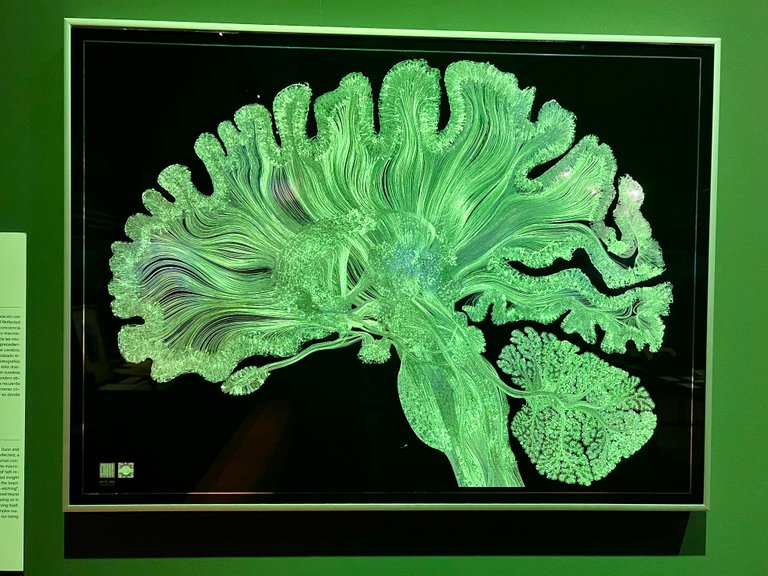

Hola querido hiver.
Regreso a la comunidad de los museos para compartir otra exposición que visité. Todo lo relativo al cerebro y las neurociencias me interesa y, aunque ya me sabía la mayor parte de las cosas que vi nunca sobra repasar y añadir nuevos datos a mi mente ávida de conocimientos.
Estará activa hasta el próximo 9 de marzo en el Centro de Historias de Zaragoza, así que todavía estás a tiempo de disfrutarla.
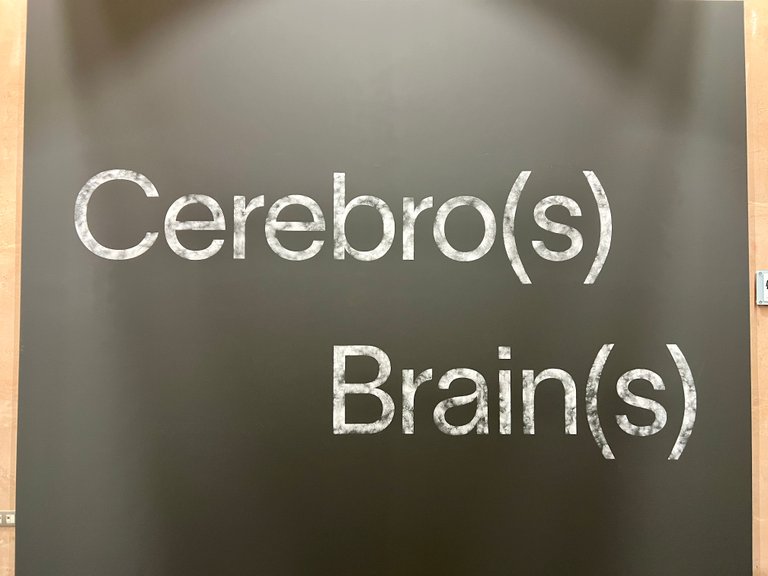
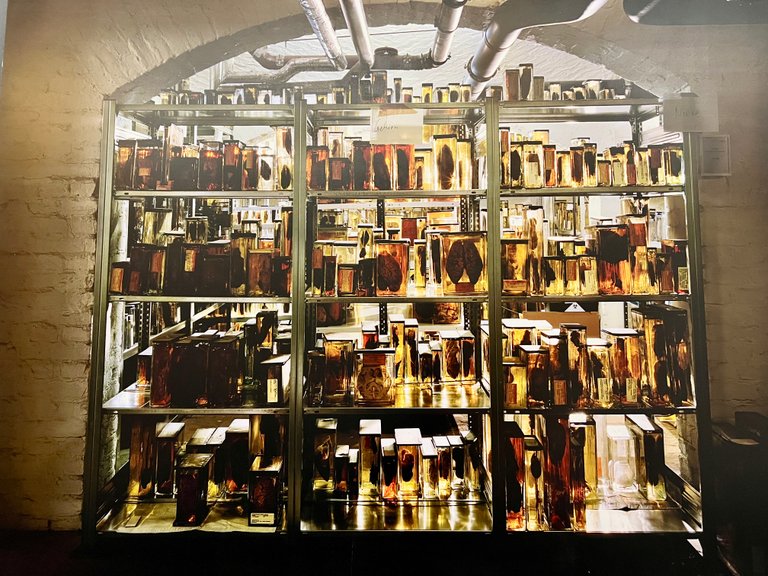
Antes de entrar a la sala de exposiciones nos recibe una gran fotografía de los Almacenes del Museo de Historia Médica de Berlín. En sus sótanos se deposita esta inquietante colección de anatomía fotografiada por Daniel Alexander.
La exposición se divide en tres grandes apartados: materia, mente y otras mentes. Los paneles informativos que encontramos durante nuestro recorrido nos plantean una serie de preguntas que se intenta responder.
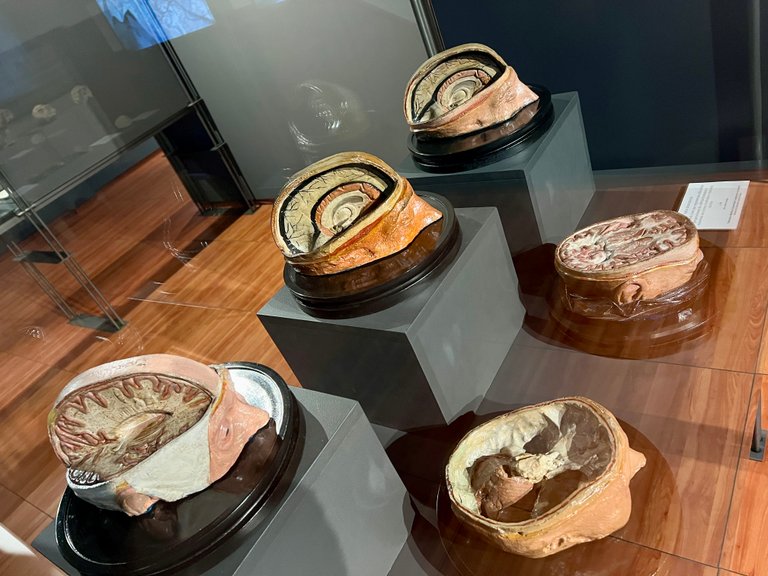
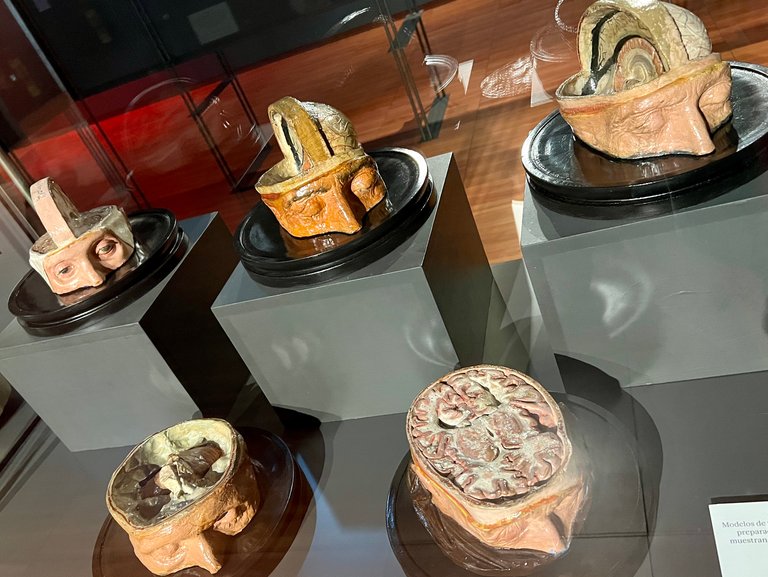
Comenzamos explorando el cerebro como objeto anatómico, con una serie de maquetas a escala real. No aptas para aprensivos, en especial la de los ojos abiertos... ¡qué repelús!
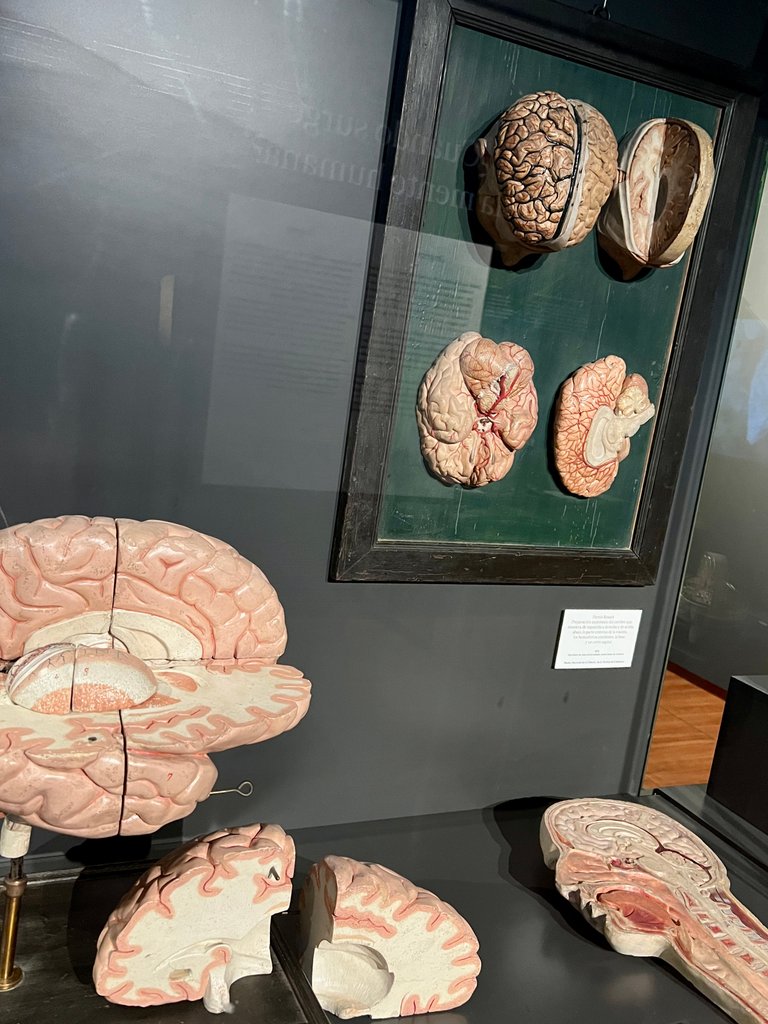
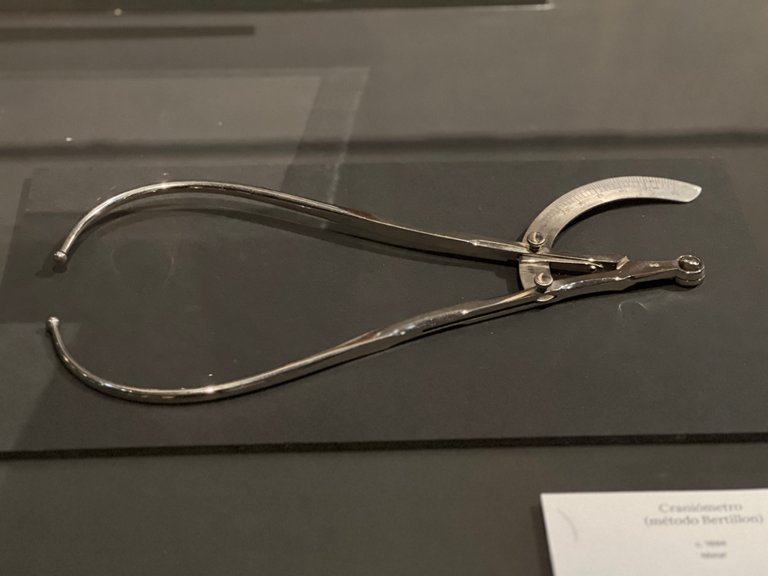
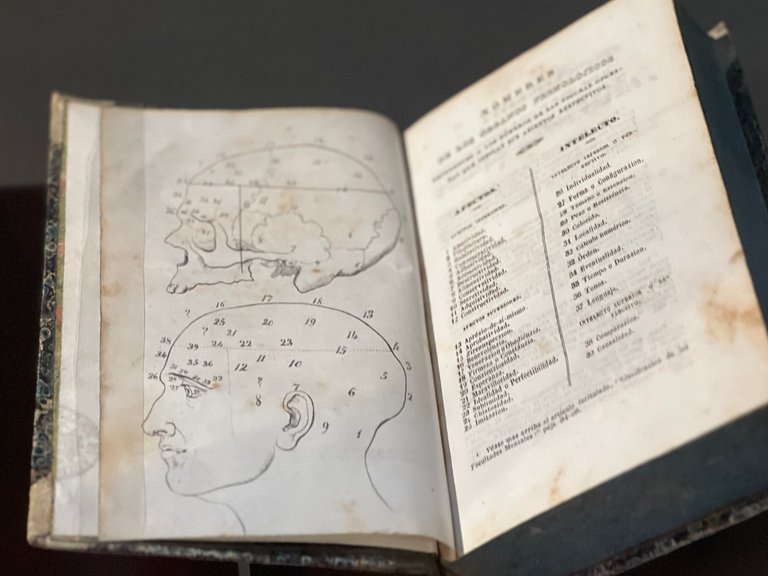
El instrumento de la foto del medio es un medidor de cráneos. Durante un tiempo se pensó que estaba directamente relacionado con la capacidad cognitiva.
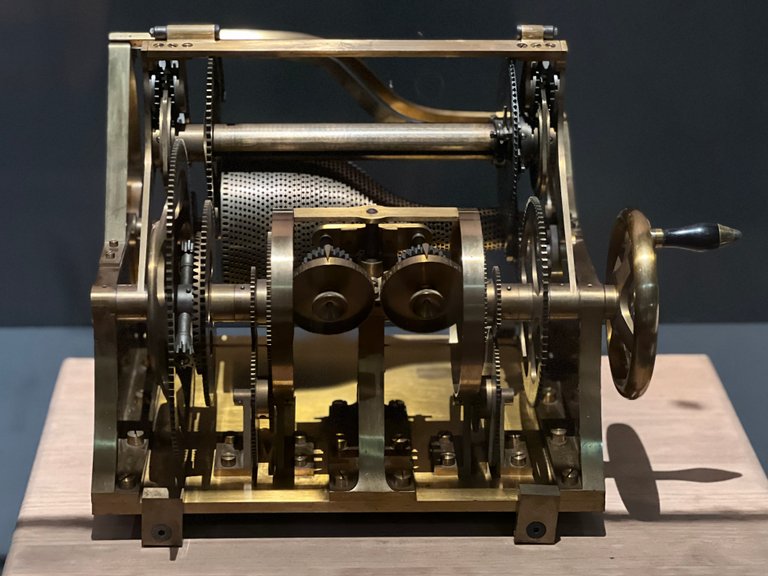
La siguiente sección trata de comprender el cerebro en términos de tecnología estableciendo una serie de metáforas. Arriba vemos una máquina de cálculo inventada por Leonardo Torres Quevedo. 1852-1936
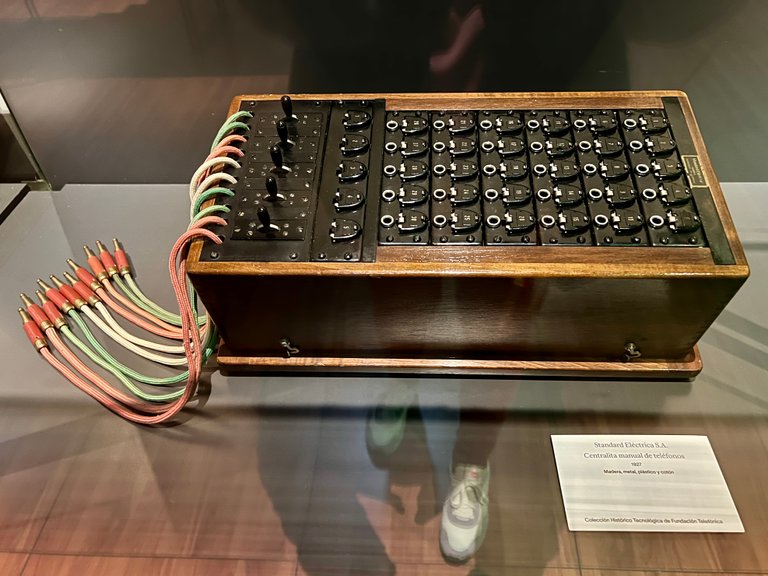
Centralita manual de teléfonos de Standard Eléctrica S.A. 1927
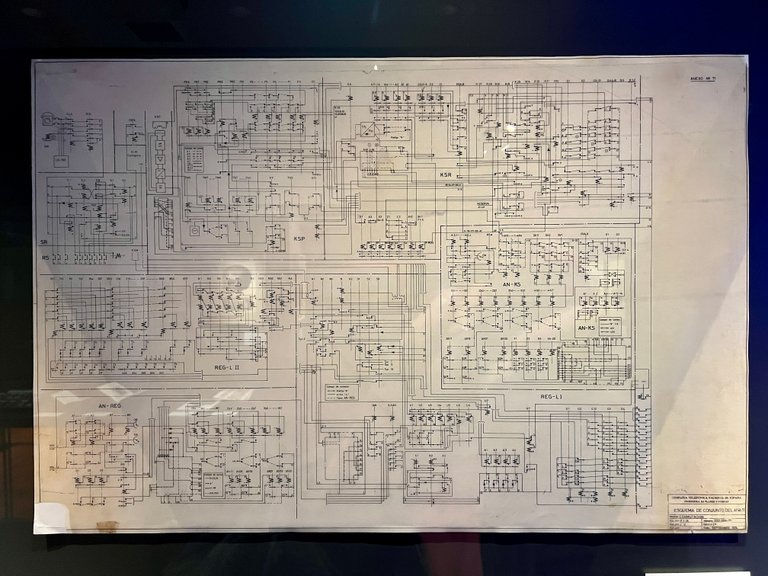
Esquema de conmutación de una central telefónica automática. 1974
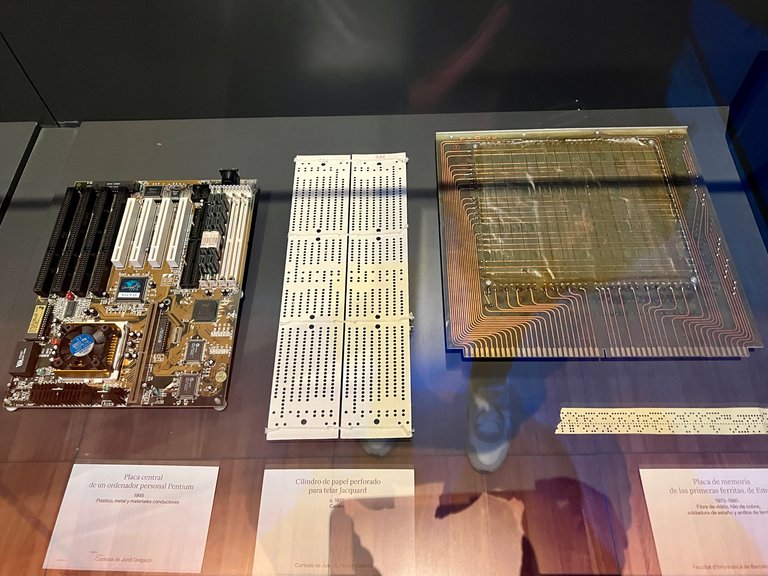
Placas de memoria de diferentes épocas: desde las primeras perritas, pasando por el papel perforado hasta la placa central de un Pentium.
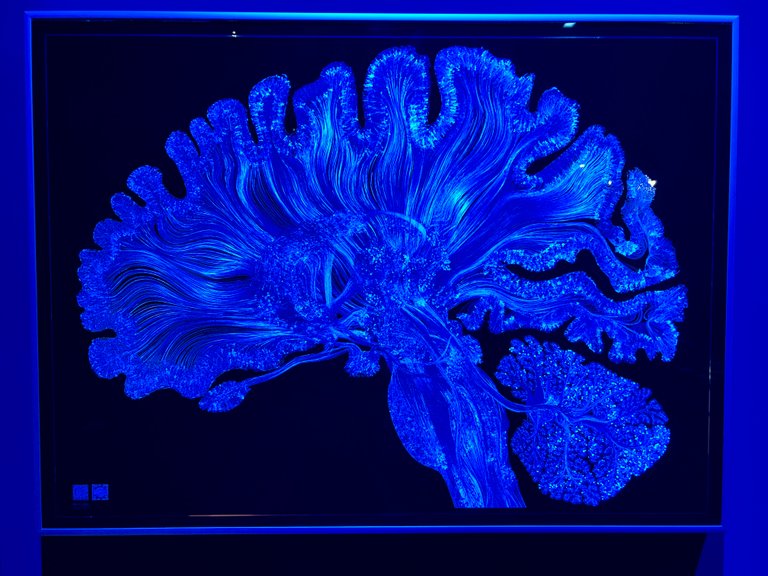
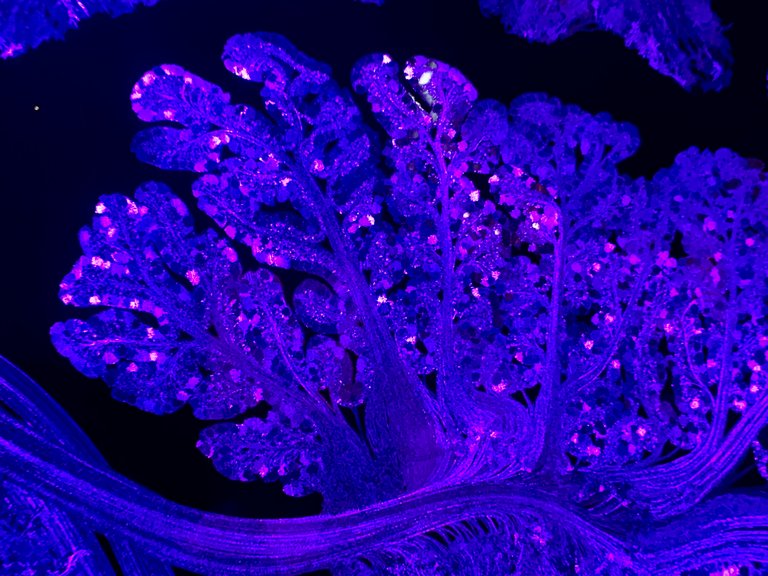
Me fascinaron unos micrograbados reflectantes sobre material vitrocerámico que iban cambiando de color. Son obra de la colaboración entre Greg Dunn y Brian Edwards, neurocientífico y físico respectivamente y ambos artistas. Esta obra pertenece a su proyecto Self Reflected, donde observamos lo que sucede en nuestras propias mentes mientras lo miramos.
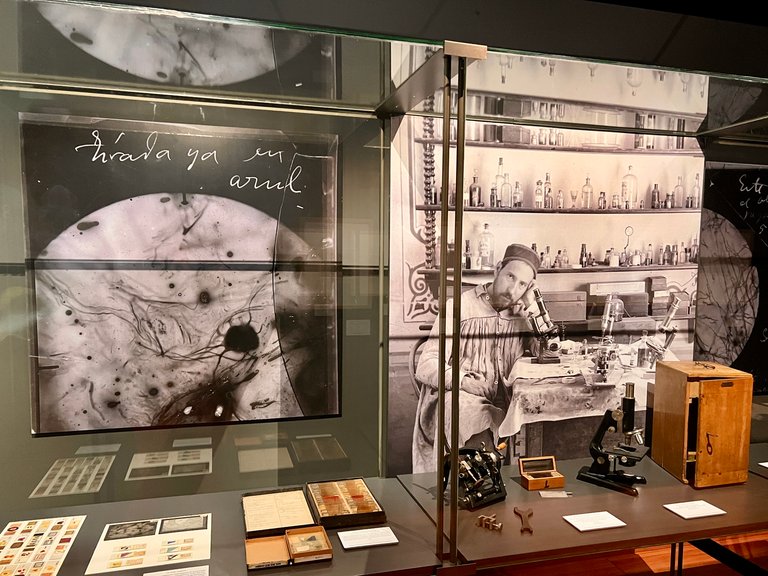
Llegamos al apartado sobre los conectomas. Santiago Ramón y Cajal está considerado como el padre de la neurociencia moderna. Fue quien demostró que las neuronas formaban una red de conexiones, lo que le valió el Premio Nobel de Medicina en 1906 compartido con Camilo Golgi.
Te invito a que visites la reseña que escribí sobre uno de sus libros para que le conozcas un poco mejor. Admiro mucho su labor, tanto como su persona. Es uno de los personajes de la Historia con los que me habría gustado coincidir en el tiempo.
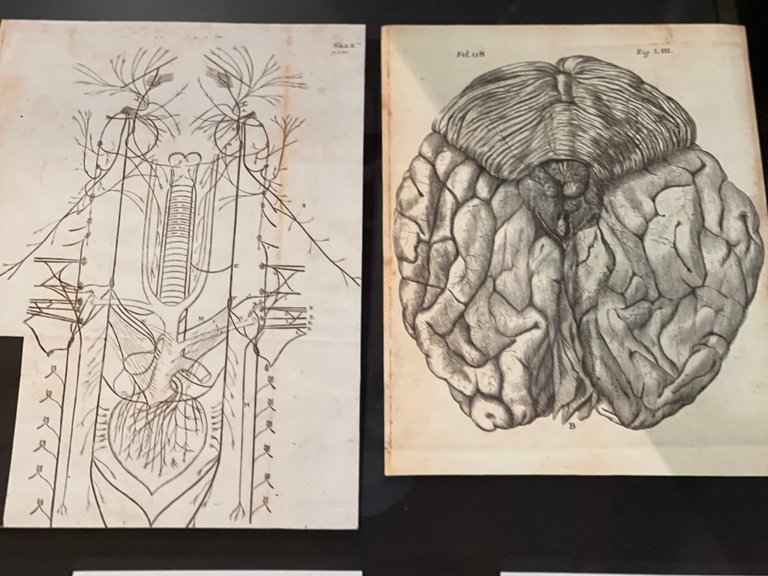
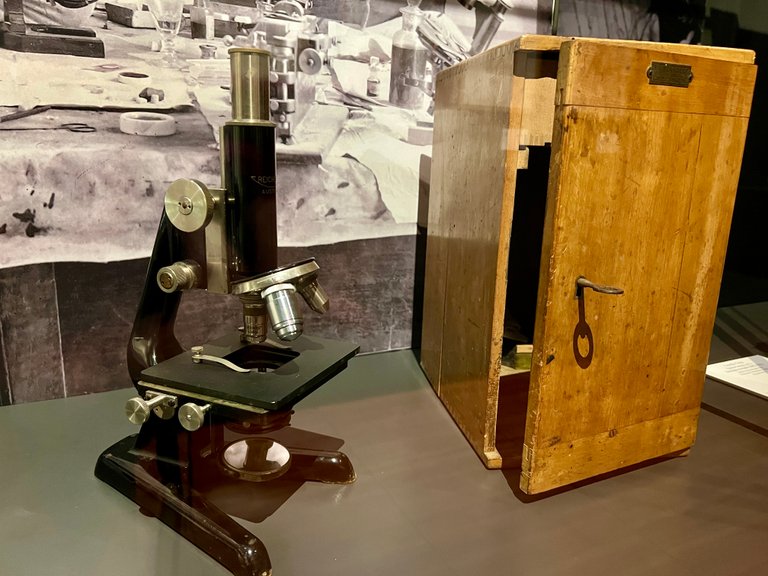
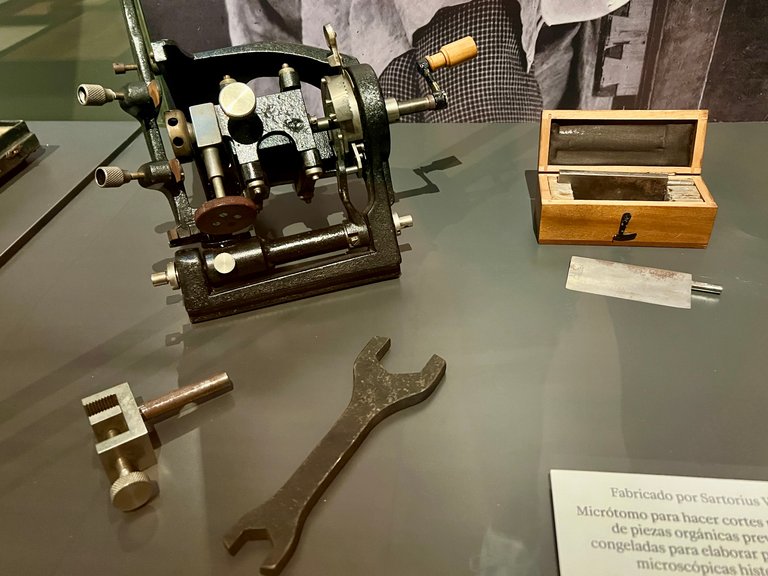
Podemos observar parte del instrumental que utilizaba Cajal, como esta máquina para hacer cortes de tejido con los que se elaboraban las preparaciones microscópicas.
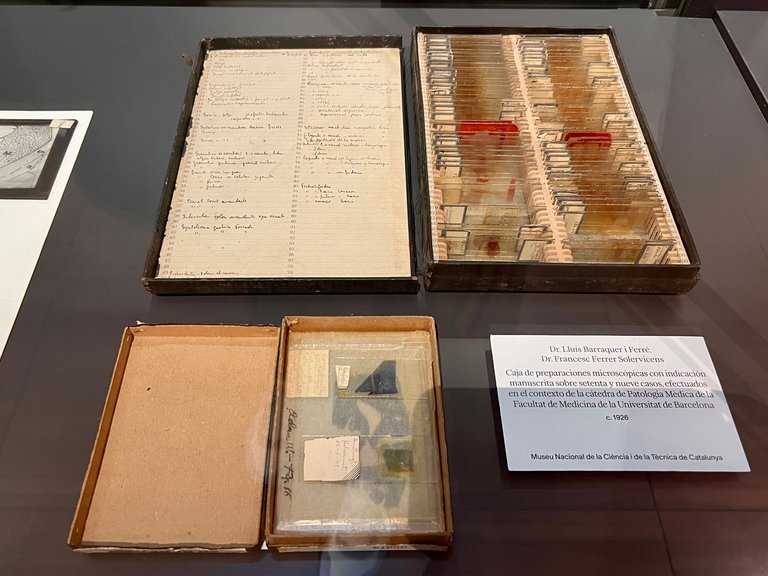
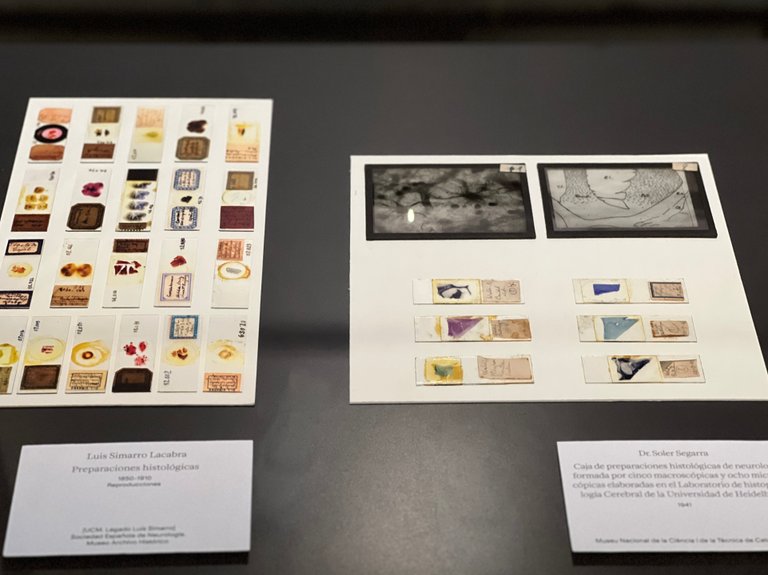
Preparaciones histológicas listas para su observación con el microscopio.
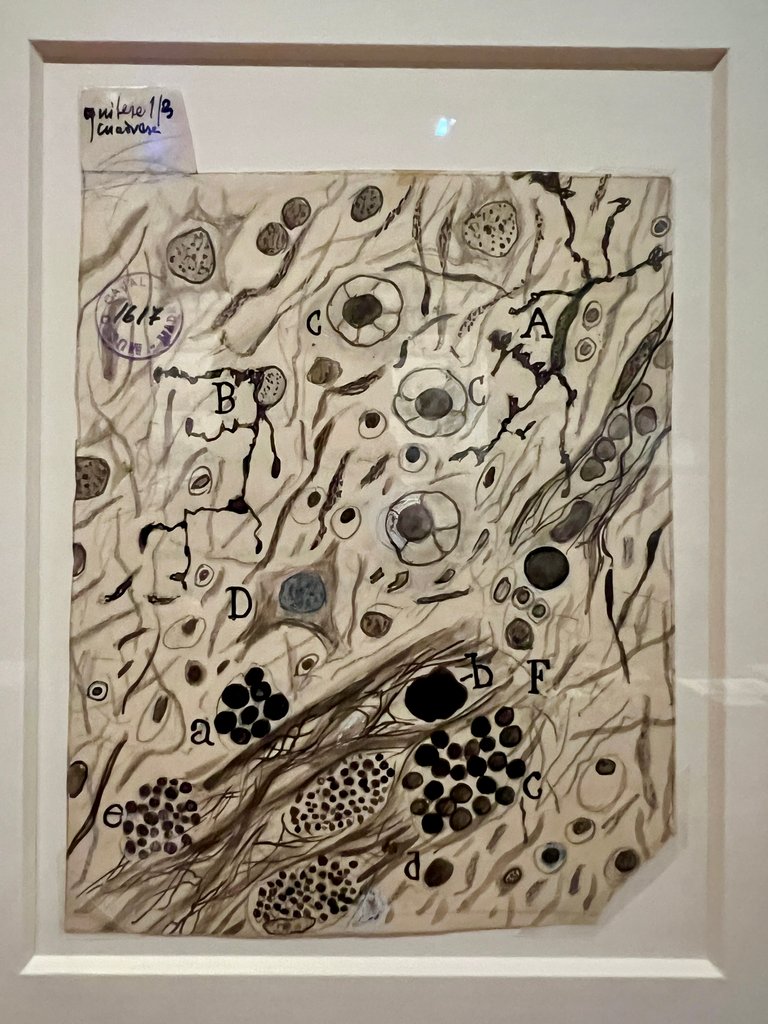
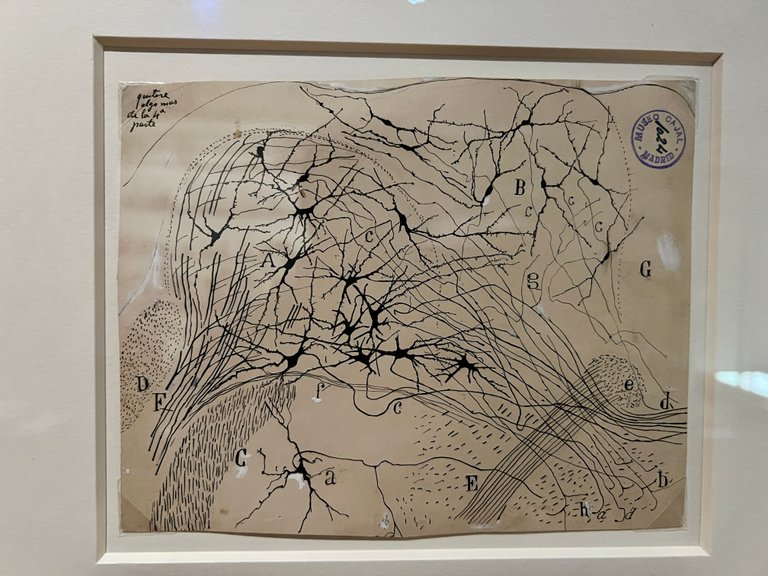
Cajal tenía un gran talento para el dibujo. Fue capaz de reproducir lo que observaba y dejó una gran colección de imágenes.
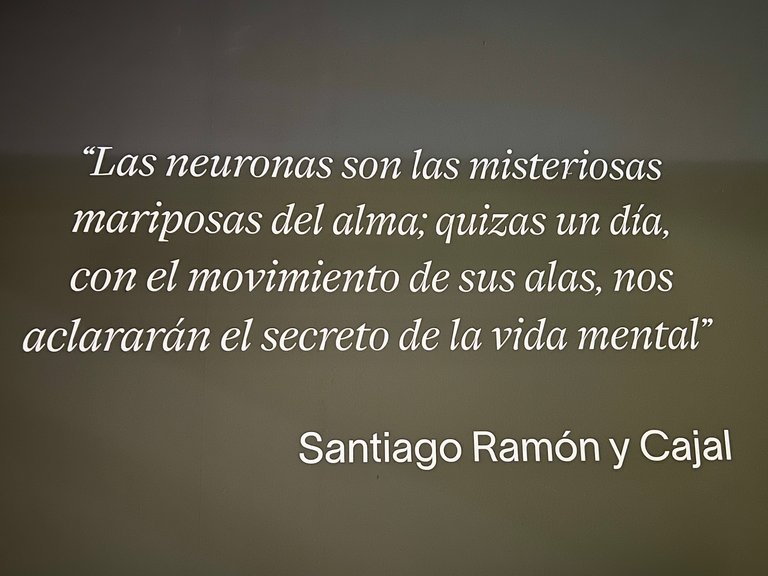
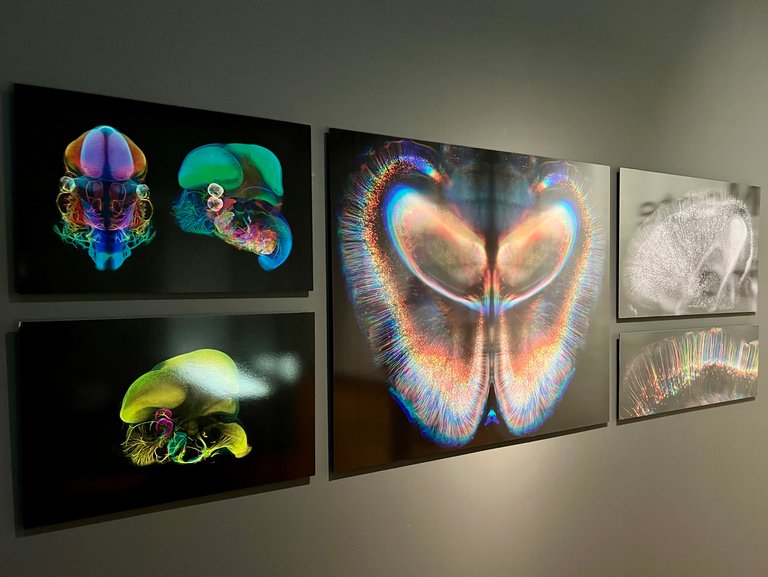
Visualizaciones de las neuronas de un ratón recreadas en 3D.
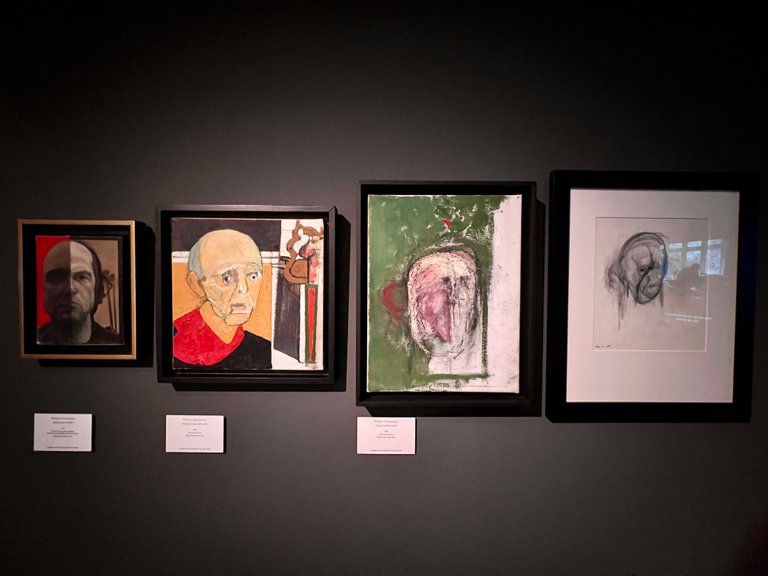
Pasamos al bloque dedicado a la mente. Esta serie me impactó. Son autorretratos que el pintor William Utermohlen comenzó a pintar al ser diagnosticado con la enfermedad de Alzheimer. El deterioro progresivo es evidente.
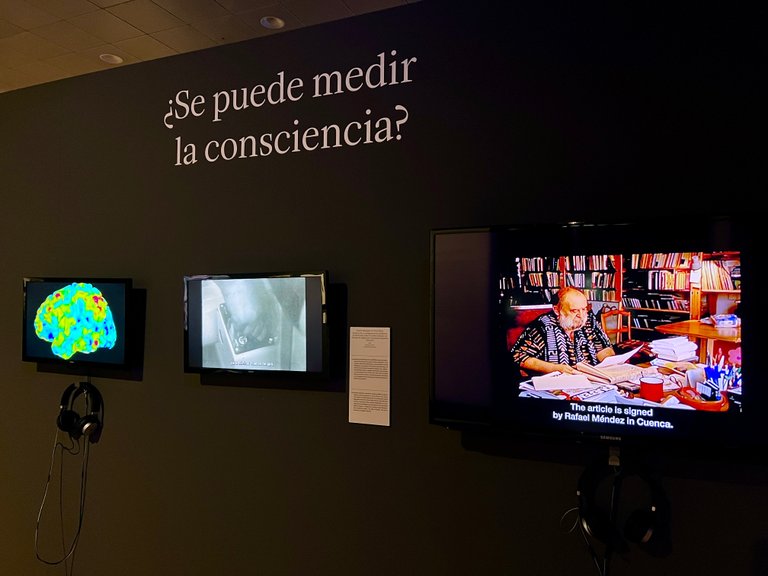
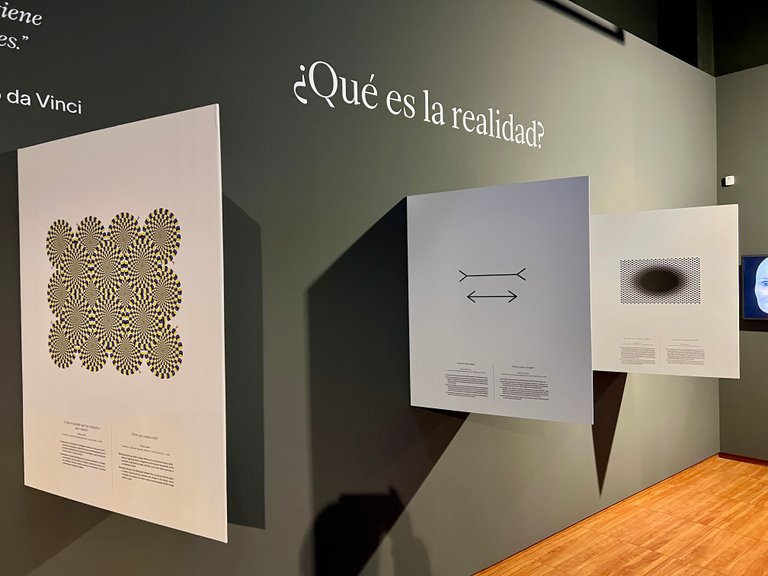
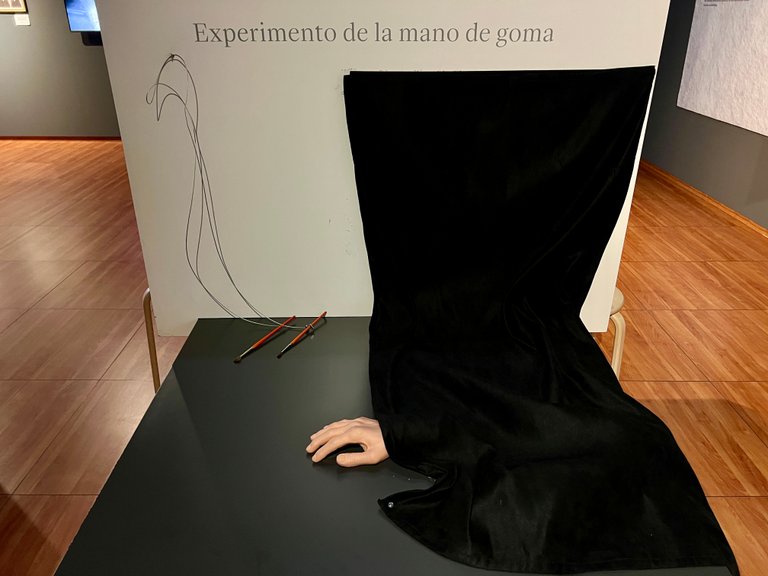
En la siguiente sala podemos experimentar con la consciencia y la percepción. Nuestro sistema de procesamiento de la información es altamente complejo y, sin embargo, la realidad nos sigue engañando.
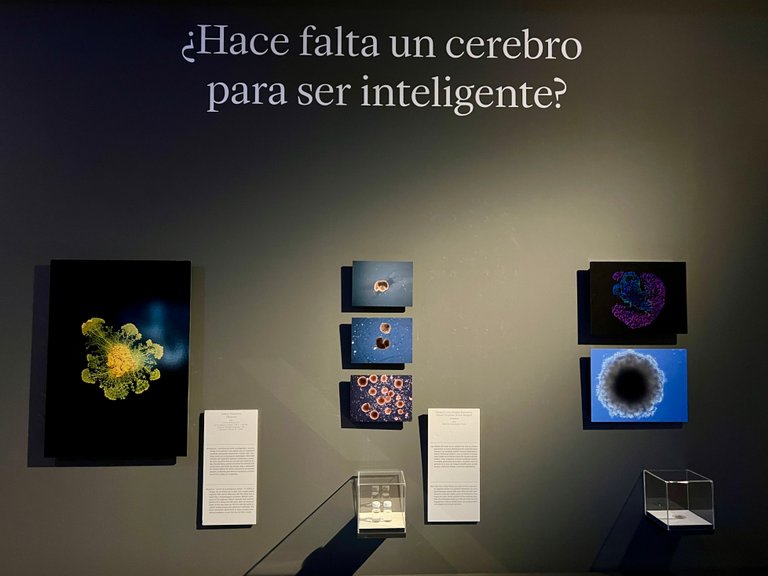
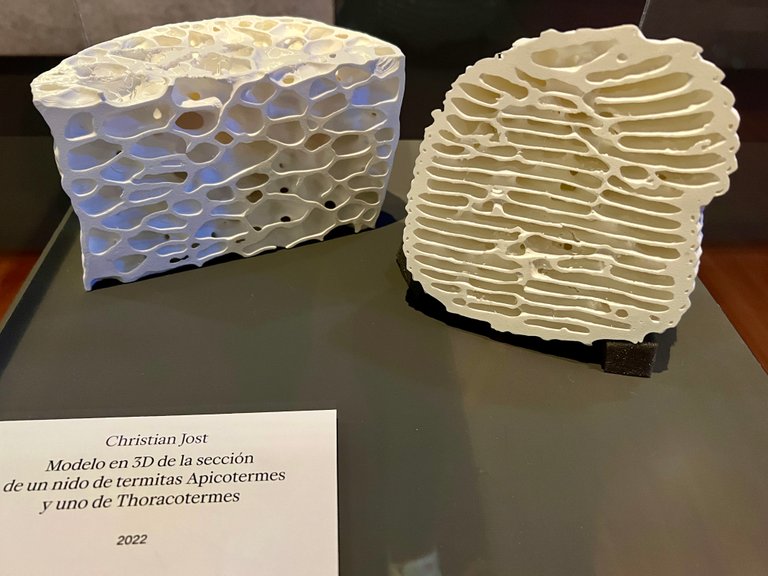
El último bloque se dedica a otras mentes. No es necesario tener un cerebro para ser inteligente y la naturaleza está repleta de mentes colectivas que forman superorganismos. Algo que como colmena conocemos bien, jeje.
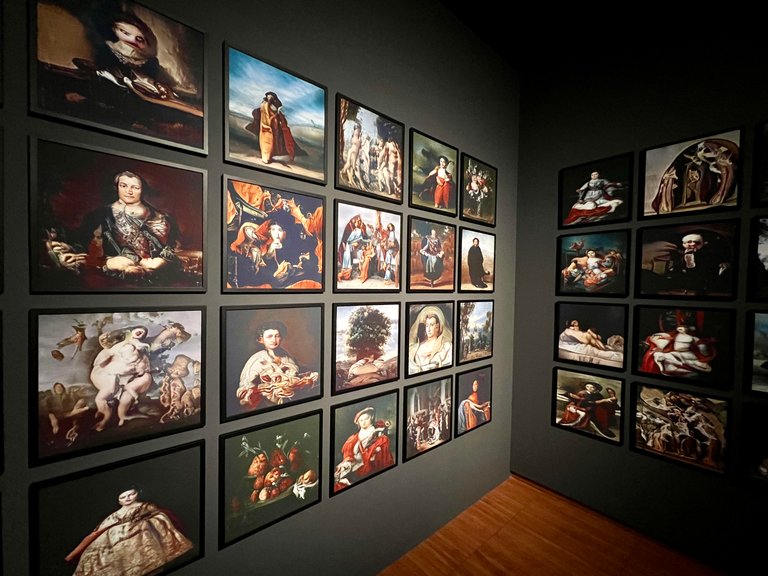
Y llegamos a las mentes artificiales, tema candente y actual. ¿Podemos llamar inteligente a una máquina? En la imagen superior, instalación titulada Déjà-vu de los artistas Joan Fontcuberta y Pilar Rosado. Tomaron las obras del Museo Nacional del Prado de Madrid y alimentaron un algoritmo, pero al pedirle que generase nuevas obras basadas en las anteriores se obtenían grandes aberraciones que producen más rechazo que atracción.
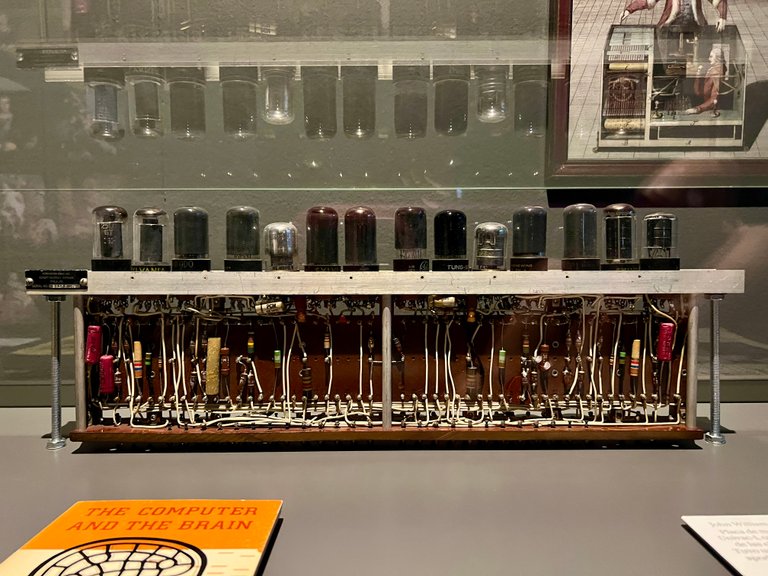
Placa de memoria del ordenador Univac-1. 1951. Este aparato fue considerado el primer cerebro electrónico.
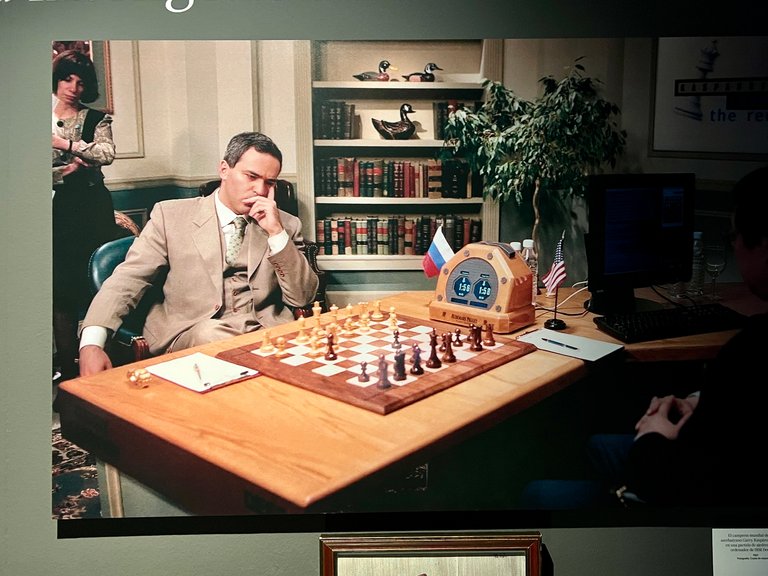
El ser humano seguirá explorando sus propios límites ¿Terminaremos como Kasparov y Deep Blue?
Créditos:
Datos obtenidos de los paneles explicativos de la propia exposición y del folleto informativo.
Hasta la próxima publicación. Mientras tanto, ¡cuídate!

Herramientas: Cámara iPhone 13 Pro, editor de fotos Mac.
Mis publicaciones en Worldmappin pinchando aquí
Si te gusta lo que publico, únete a mi Fanbase pinchando aquí

©️Copyright 2024 Paloma Peña Pérez. Todos los derechos reservados.



Hi, dear hiver.
I return to the museum community to share another exhibition I visited. Everything related to the brain and neurosciences interests me and, although I already knew most of the things I saw, it never hurts to review and add new data to my knowledge-hungry mind.
It will be active until March 9th at the Centro de Historias de Zaragoza, so you still have time to enjoy it.


Before entering the exhibition hall, we are greeted by a large photograph of The Cellars of the Medical History Museum in Berlin. This disturbing collection of anatomy, photographed by Daniel Alexander, is housed in its cellars.
The exhibition is divided into three main sections: matter, mind and other minds. The information panels that we find during our tour pose a series of questions that we try to answer.


We begin by exploring the brain as an anatomical object, with a series of life-size models. Not for the squeamish, especially the one with the eyes open.... how creepy!



The instrument in the middle picture is a skull gauge. For a while it was thought to be directly related to cognitive ability.

The next section tries to understand the brain in terms of technology by setting up a series of metaphors. Above is a calculating machine invented by Leonardo Torres Quevedo. 1852-1936

Manual telephone switchboard of Standard Eléctrica S.A. 1927

Switching diagram of an automatic telephone switchboard. 1974

Memory boards from different eras: from the first little dogs, through perforated paper to the central board of a Pentium.


I was fascinated by reflective micro-etching on glass-ceramic material that kept changing colour. They are a collaboration between Greg Dunn and Brian Edwards, neuroscientist and physicist respectively, and both artists. This work belongs to their project Self Reflected, where we observe what is going on in our own minds as we look at it.

We come to the section on connectomes. Santiago Ramón y Cajal is considered the father of modern neuroscience. It was he who demonstrated that neurons formed a network of connections, which earned him the Nobel Prize for Medicine in 1906, shared with Camilo Golgi.
I invite you to visit the review I wrote about one of his books to get to know him a little better. I admire his work as much as his person. He is one of the people in history with whom I would have liked to coincide in time.



We can see some of the instruments Cajal used, such as this machine for making tissue sections with which the microscopic preparations were made.


Histological preparations ready for observation under the microscope.



Cajal had a great talent for drawing. He was able to reproduce what he observed and left a large collection of images.

The neurons are the mysterious butterflies of the soul; maybe one day, with the movement of their wings, they will clarify us the secret of mental life.
Santiago Ramón y Cajal.

Visualisations of mouse neurons recreated in 3D.

We move on to the block dedicated to the mind. This series struck me. They are self-portraits that the painter William Utermohlen began to paint when he was diagnosed with Alzheimer's disease. The progressive deterioration is evident.

Can it be measured the conscience?

What is the reality?

Rubber hand illusion experiment
In the next room we can experiment with consciousness and perception. Our information processing system is highly complex and yet reality continues to deceive us.

Is a brain needed to be smart?

The last block is devoted to other minds. It is not necessary to have a brain to be intelligent and nature is full of collective minds that form super-organisms. Something we as a hive know well, hehe.

And then we come to artificial minds, a hot and current topic: can we call a machine intelligent? In the image above, an installation entitled Déjà-vu by the artists Joan Fontcuberta and Pilar Rosado. They took works from the Museo Nacional del Prado in Madrid and fed an algorithm, but when they asked it to generate new works based on the previous ones, they obtained large aberrations that produce more rejection than attraction.

Memory board of the Univac-1 computer. 1951. This device was considered the first electronic brain.

Humans will continue to explore their own limits. Will we end up like Kasparov and Deep Blue?
Credits
Data obtained from the explanatory panels of the exhibition itself and from the information leaflet.
Until the next post. In the meantime, take care!

Tools: iPhone 13 Pro camera, Mac photo editor.
Translated with DeepL
My publications in Worldmappin by clicking here
If you like my content, join my Fanbase clicking here

©️Copyright 2024 Paloma Peña Pérez. All rights reserved.


Wonderful and very interesting.
Thank you!
El cerebro es una estructura asombrosa y muy compleja. Las neuronas se comunican entre sí constantemente y producen sinapsis que pueden usarse como obras de arte. Vi algunas imágenes del cerebro que lo demuestran y eso demuestra lo asombrosa que es la naturaleza.
Así es. Para mí es el mayor misterio que hay. Cómo las sinapsis se convierten en movimientos, pensamientos, emociones… es fascinante. En este caso, como bien apreciaste, además se puede admirar y disfrutar en forma de arte. Gracias por la visita, el apoyo y sobre todo por apreciar lo que traté de mostrar.
Gracias Paloma 🥰, me encantó esta expo. Fue tal y como si estuviera haciendo un recorrido guiado. Un abrazo 🤗 y feliz día de San Valentín 💚
Gracias por apreciarlo, feliz día de San Valentín para ti también. Que des y recibas mucho amor. ❤️
💚
Wow, this is an interesting museum/exhibition! Haven't seen anything like that before. Thanks for sharing!
The brain is the greatest mystery that exists, it is fascinating. I really enjoyed the experience, thank you for accompanying me.
Una exposición bien variada la que nos has compartido. Todos los experimentos que se han realizado para saber como funciona, cada puntito de luz, es muy interesante. Un abrazo.
!BBH
!PIZZA
El cerebro y sus misterios, jeje. A mí me fascina, en cuanto vi que iban a hacer la exposición me lo anoté para no perdérmela. Gracias por tu visita.
You can check out this post and your own profile on the map. Be part of the Worldmappin Community and join our Discord Channel to get in touch with other travelers, ask questions or just be updated on our latest features.
My collection of pins keeps growing, hehe.
Thanks for the support! And special thanks to @gwajnberg for the curation work, much appreciated.
Hive.Pizza upvoted this post.
$PIZZA slices delivered:
(9/15) @sacra97 tipped @palomap3
Learn more at https://hive.pizza.
Wow I have never seen so many brains. The mind really has been on a lot of people's thought for quite some time. It is an organ as they say only uses a fraction of its full capacity. I can see why so many instruments and devices have been created over the years. I was waiting for the iced monkey brains from the Indiana Jones movie. I'm happy I ate before seeing all this 😆 Thanks for sharing its great to see exhibits with subject matter that you wouldn't expect.
Mueseum Community
🤣🤣 The models at the beginning are disturbing, they seem real. That not all brain capacity is used is unlikely. It doesn't make sense from what we know of evolution. What we don't know is the limit that its complexity can reach, a challenge.
Oh thats what I was trying to say is it's limit 😃 is there any truth that some unlock further limits? Like Einstein for instance...
Einstein brain is the most studied in the history, I think. 🤔 The key are the connections, but for the moment keeps the mystery.